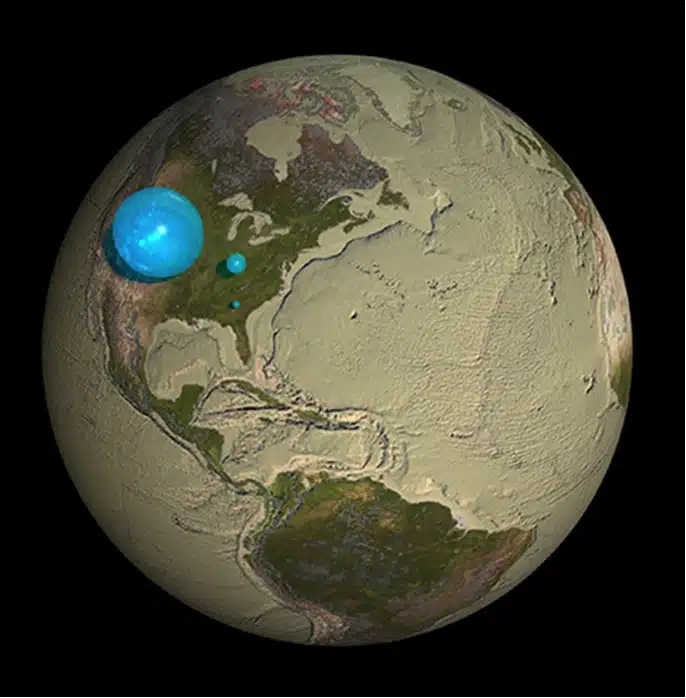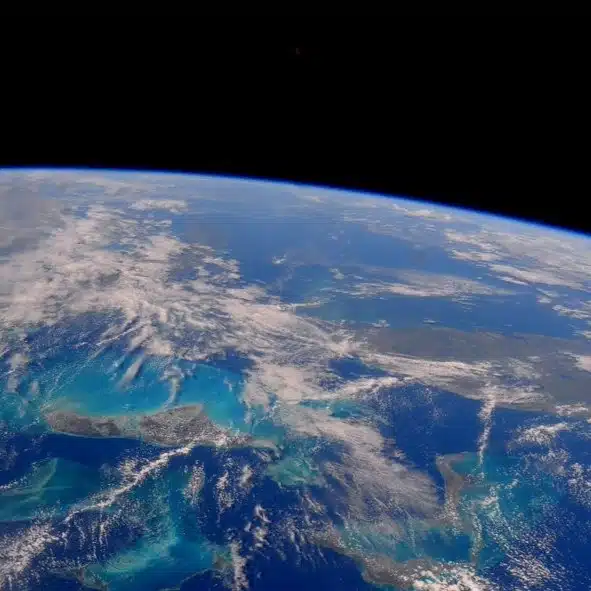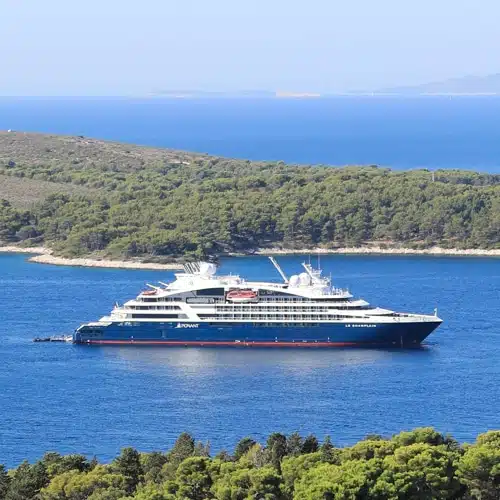Earth as an island
French astronaut Jean-François Clervoy has three NASA missions to his name. But it was at sea, as the guest of honour on a PONANT Caribbean cruise, that he shared his experience and his view of our Earth, the “blue” island suspended in space.
First the Arctic and the North Pole, now the Caribbean Sea and the West Indies…
In both cases, it’s the same ocean. In one region, you have cold water that’s frozen on the surface. In the other, the water is warm, in countless shades of turquoise, and home to an incredible diversity of marine life. But in both cases, we’re talking about the same fundamental element of life on Earth: water! An element which, contrary to what you might think, is rare on Earth.
And yet, Earth is known as the “blue planet”…
It’s true that from space we see a lot of blue. However, if we were to condense all the water on Earth – water tables, lakes, rivers, oceans, glaciers, polar ice caps, etc. – into a single “ball of water”, we would get a sphere approximately 1,500 km in diameter, around ten times smaller than the Earth itself. And if we were to isolate the “freshwater” part of this “ball of water”, we would have a new sphere 300 km in diameter. And if we then isolated only the freshwater accessible to humans for growing crops, drinking, hygiene, etc., that would leave just one small ball, barely 60 km in diameter, for the whole of mankind. In other words, water on Earth is precious, but not just because of its rarity, because it is essential to all living things. We need to take care of it, right from the source of our rivers!

© Howard Perlman, USGS; globe illustration by Jack Cook, Woods Hole Oceanographic Institution ; and Adam Nieman.
Have you had the chance to observe this region of the Caribbean from “up there”?
Yes, it’s a region that we really enjoy photographing. You just have to remember to have your camera ready in advance, because it goes by so quickly from up there. We go around the world sixteen times a day! Basically, we can photograph the West Indies from every angle. Once vertically, then at an angle from the west, then from the east… This string of pearls in the heart of the Gulf of Mexico is well known among astronauts for its incredible variety of colours and the characteristic geometric shapes of its coastlines.

© Photo provided by NASA astronauts
And what sort of experience do you expect from this kind of PONANT adventure?
Lots of discussions with passengers, whether at conferences, or more informally in the ship’s passageways, or in the restaurant over a meal. It’s always a pleasure to answer their questions, but it’s also an opportunity to learn more from PONANT experts and naturalists during excursions. The daily exchange between passengers, crew and guests of honour is the best part of these adventures.

© Photo provided by NASA astronauts
As an astronaut, what subjects do you like to educate passengers about?
I’m often asked about our work and the organisation of life in space, but I also like to talk about the emergence of space tourism, or about non-astronauts gradually being able to experience flying in space, in the same way that PONANT passengers can experience navigating the seas without necessarily being sailors themselves. As we sail from island to island, I like the idea of seeing the Earth itself as an island in the heart of the cosmos. I like the parallel between the islands of the ocean on Earth, and the islands of the cosmos in the universe. Beyond being a charming correlation, the comparison seems interesting from a physical and geographical point of view, as well as in terms of isolation, limited access to certain resources, and even navigation. In any case, it’s food for thought and discussion.
Photo credit for portrait of Jean-François Clervoy: Laurence Honnora

PONANT takes you there
Sail in the company of fascinating people



